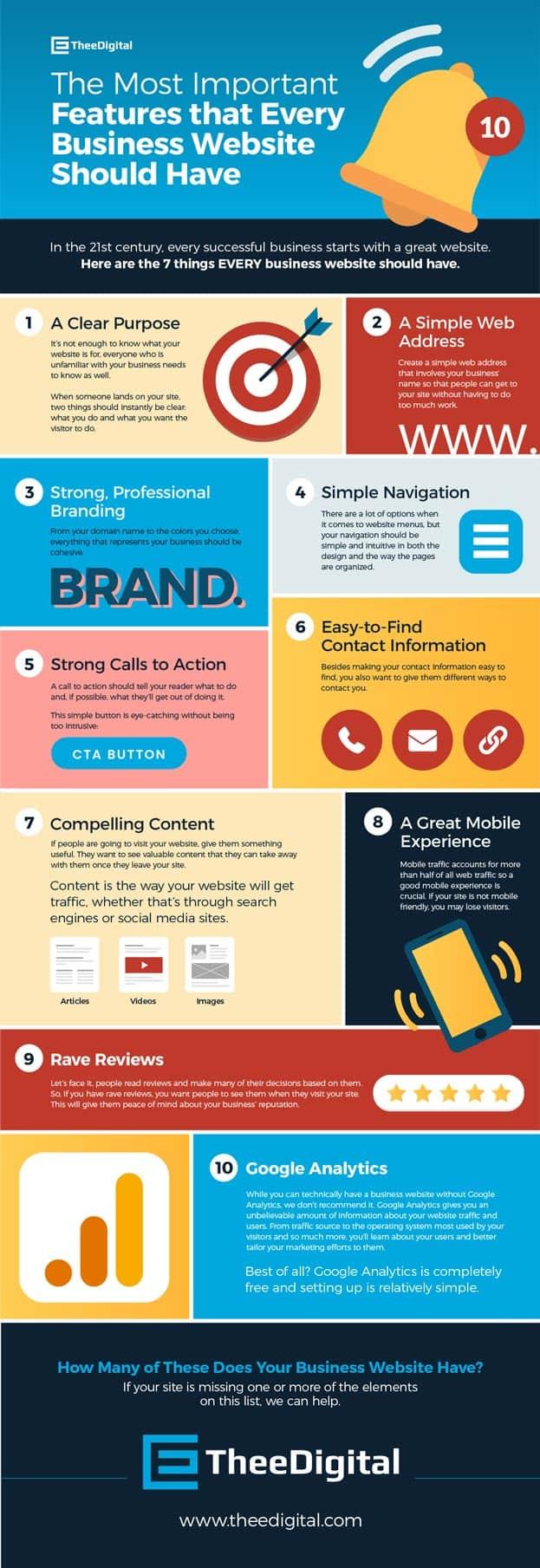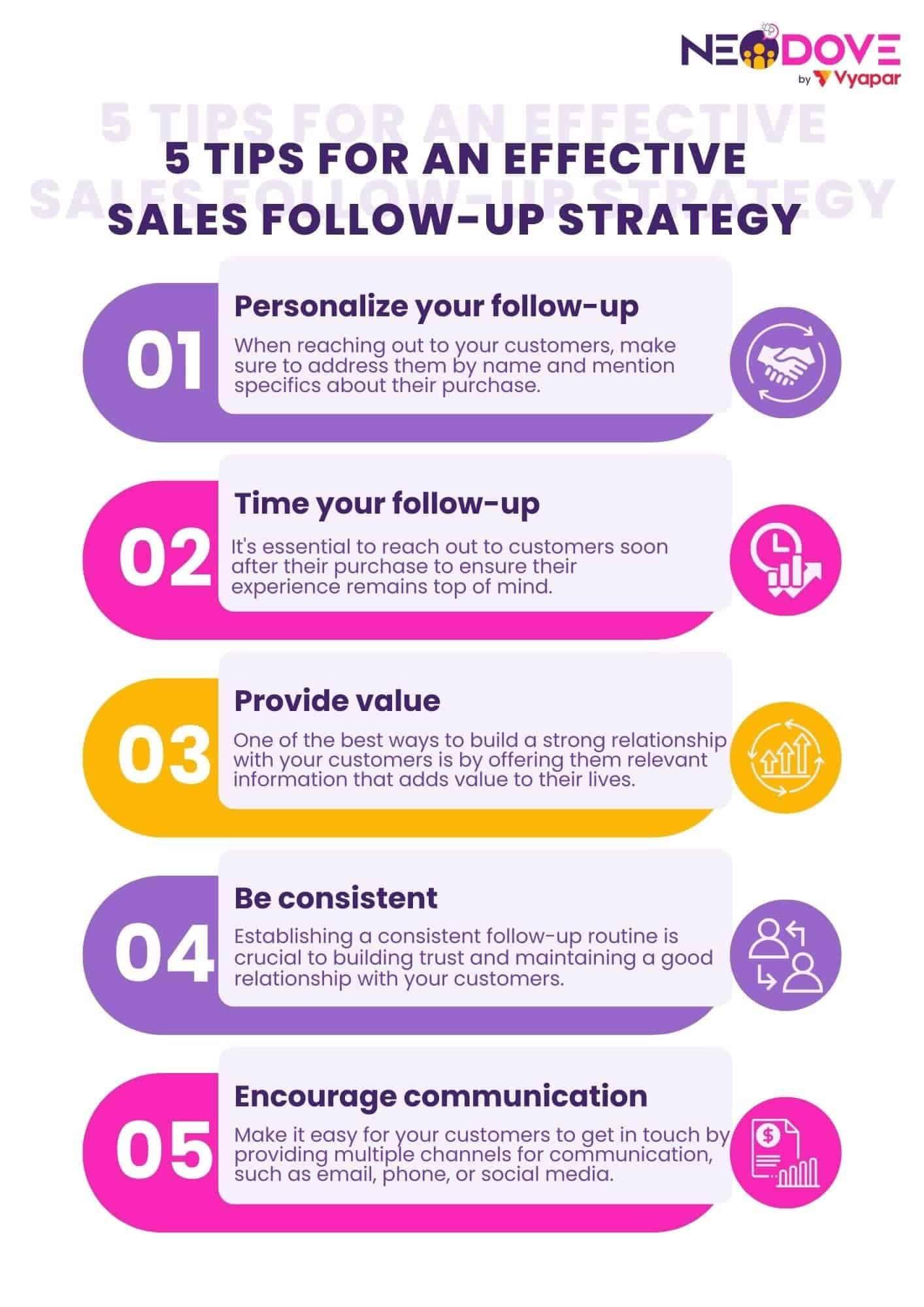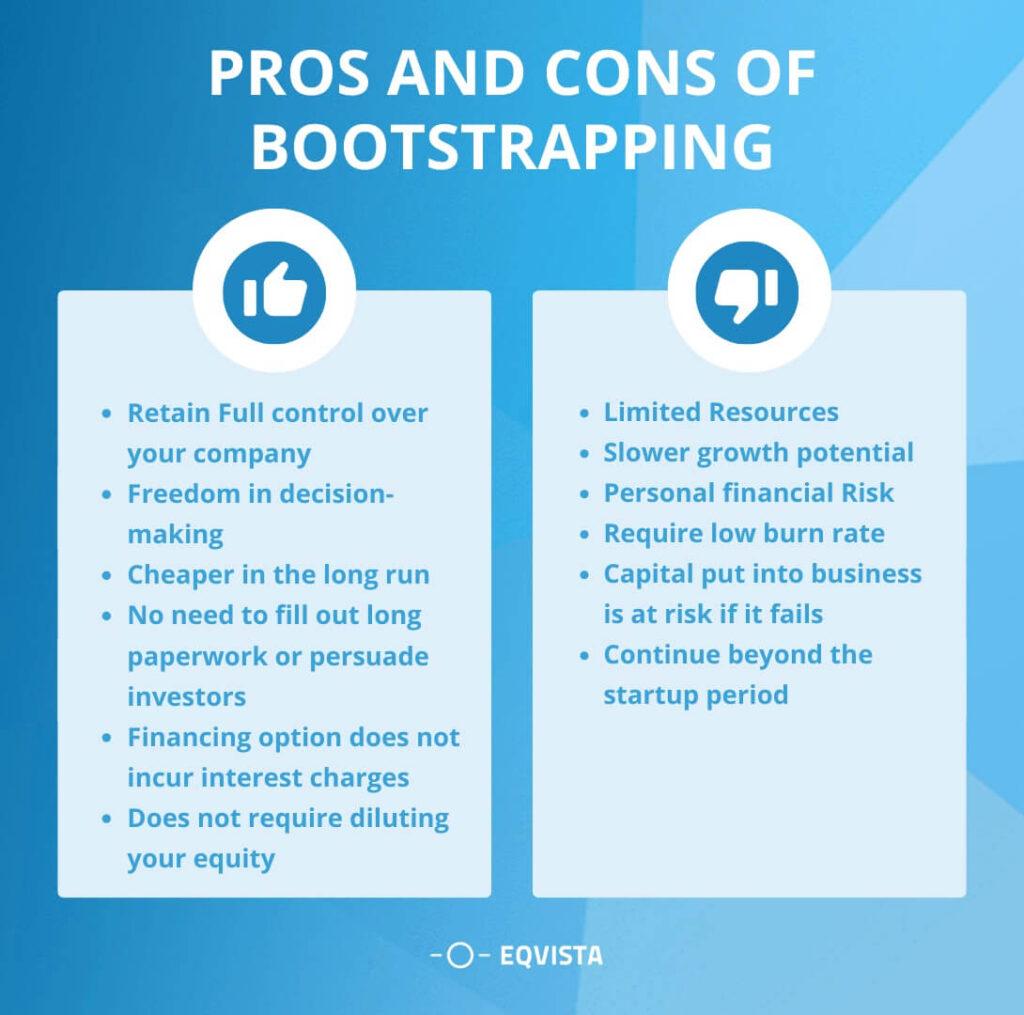
In today’s digital age, having a website isn’t just a luxury—it’s a necessity. For businesses big and small, an online presence can mean the difference between thriving and barely surviving. Yet, surprisingly, many companies still operate without a website, missing out on countless opportunities to connect with customers, showcase their offerings, and establish their brand.
In this article, we’ll dive into 57 types of businesses that desperately need a website but may not realize it yet. Whether it’s the local bakery down the street or the family-owned plumbing service in your town, the potential for growth is limitless when they harness the power of the internet. Plus, we’ll arm you with effective pitching strategies to help you convince these businesses to take the leap into the digital world. So, if you’re ready to help your community thrive and expand your own freelance or agency services, let’s explore the untapped potential waiting just around the corner!
The Importance of a Website for Every Business
In today’s fast-paced digital world, having a website is no longer just a luxury; it’s a necessity for businesses of all sizes. A website serves as the cornerstone of your online presence, providing a platform to showcase your products or services, engage with customers, and establish credibility. Without one, businesses risk losing potential customers to competitors who are more digitally savvy.
Consider the following key benefits of having a website:
- 24/7 Availability: Unlike traditional storefronts, a website operates around the clock, allowing customers to browse and make purchases at their convenience.
- Enhanced Visibility: A website increases your visibility on search engines, making it easier for potential customers to find you. This is particularly crucial for local businesses that want to attract nearby customers.
- Brand Credibility: A professional website builds trust with your audience. It acts as a reflection of your brand, allowing you to convey your values, mission, and expertise.
- Customer Engagement: Websites offer various channels for interaction, including contact forms, blogs, and social media links, fostering a sense of community around your brand.
For businesses that might be hesitant about investing in a website, consider this: a well-designed site can significantly improve customer retention and satisfaction. Visitors are more likely to return to a site that is user-friendly, informative, and visually appealing. This, in turn, leads to higher conversion rates and increased sales.
Moreover, in today’s consumer-driven market, potential clients often conduct online research before making a purchase. A website not only serves as an information hub but also as a valuable marketing tool. By optimizing your site for search engines and incorporating engaging content, you can attract a larger audience and drive traffic to your business.
To illustrate the impact of having a website, let’s take a look at a simple comparison:
| Business Without a Website | Business With a Website |
|---|---|
| Limited reach and visibility | Global reach, 24/7 accessibility |
| Dependence on foot traffic | Attracts customers from anywhere |
| Difficulty in sharing information | Easy to provide updates and engage |
| No platform for online sales | Direct online sales and bookings |
In essence, a website is an essential tool that can dramatically elevate a business’s profile and performance. For anyone considering a pitch to a business that lacks an online presence, emphasize how a website can serve as a direct line to customers, enhance marketing efforts, and ultimately drive growth. With the right strategy, businesses can harness the power of the internet to transform their operations and reach new heights.

Identifying Businesses That Are Missing Out
In today’s digital landscape, having a website is not just a luxury; it’s a necessity. Yet, surprisingly, many businesses are still operating without a strong online presence, missing out on potential customers and valuable marketing opportunities. Here’s how to spot these businesses and why they should be on your radar.
Look for Traditional Industries: Many businesses in traditional sectors have been slow to embrace the digital shift. These industries include:
- Local artisans and craftsmen
- Family-owned restaurants
- Independent service providers, like plumbers and electricians
- Health and wellness practitioners, such as massage therapists
These businesses often rely on foot traffic or word of mouth, but they could significantly benefit from an online presence to reach a larger audience.
Identify Local Gaps: Dive into your community and see which businesses lack a website. You can start by visiting local directories or business listings. If you find businesses with:
- Outdated or missing contact information
- No online menu or service list
- Poor social media engagement
It’s a clear sign they might be missing out on potential customers looking for their services online.
Check for Online Reviews: A lack of an official website often correlates with fewer online reviews. Use platforms like Google My Business or Yelp to research businesses that have:
- Minimal or no reviews
- Inconsistencies between their online presence and in-store offerings
- A low engagement rate on social media
This scenario highlights an opportunity for you to provide a solution that can enhance their visibility and credibility.
Assess Their Competition: Take a look at what their competitors are doing online. If you notice that similar businesses in the area have website optimization, visible branding, and customer engagement but your target businesses do not, it’s a clear indicator that they are lagging behind. These are excellent targets for your pitch.
| Business Type | Why They Need a Website |
|---|---|
| Local Restaurants | Online menus attract new customers |
| Consultants | Showcase expertise and attract clients |
| Fitness Studios | Membership sign-ups and class schedules |
| Real Estate Agents | Property listings and virtual tours |
Keep an Eye on Trends: As consumer behavior continues to shift towards online searching and purchasing, some businesses may be oblivious to these changes. Industries such as:
- Event planning
- Beauty salons
- Home improvement services
can benefit immensely from having a website that allows potential clients to see their work, read testimonials, and easily get in touch.
By identifying these businesses, you position yourself as a problem-solver in their eyes. Prepare your pitch with tailored solutions that showcase how a website can improve their visibility and streamline customer interactions. The right approach can turn these missed opportunities into fruitful partnerships.
How to Spot Opportunities in Local Markets
Finding opportunities in local markets is all about being observant and proactive. Here are some effective strategies to identify businesses that could benefit from an online presence:
- Engage with the Community: Attend local events, farmers’ markets, or business expos. These gatherings are goldmines for networking and uncovering potential clients.
- Analyze Competitors: Look at businesses that already have websites in your area. Identify gaps in their offerings and think about how you can help others improve their digital presence.
- Utilize Social Media: Platforms like Facebook and Instagram are great for discovering local businesses. Pay attention to those with a strong offline presence but little to no online footprint.
- Conduct Surveys: Create simple surveys targeting local business owners. Ask them about their online needs and challenges. This can unearth insights about those who might be receptive to a website.
Additionally, consider the following aspects when pinpointing businesses that need websites:
- Look for Outdated or Nonexistent Websites: A quick Google search can reveal many businesses that either have outdated sites or don’t appear online at all. These are prime candidates for a website overhaul.
- Identify Niche Markets: Explore niche markets within your community. Unique local shops or service providers often lack digital visibility but have loyal customer bases that could grow online.
- Check Local Directories: Websites such as Yelp, Angie’s List, or local business directories can help identify businesses that could benefit from better online representation.
Understanding the specific needs of local businesses can also guide your approach. Here’s a simple table to help categorize potential businesses and their online needs:
| Business Type | Potential Online Need |
|---|---|
| Local Restaurants | Online menus and reservation systems |
| Plumbing Services | Service scheduling and customer reviews |
| Health & Wellness Centers | Appointment booking and service descriptions |
| Retail Stores | E-commerce and inventory management |
Lastly, refine your pitch by highlighting how a website can directly address the pain points of these local businesses. Use examples from similar industries and showcase the measurable benefits they can expect, like increased customer engagement or higher sales conversions. Be ready to demonstrate your expertise and how a tailored online presence can elevate their brand. The key is to listen actively, understand their needs, and present a solution that resonates.
The Benefits of Going Digital for Small Businesses
In today’s fast-paced digital landscape, small businesses can no longer afford to be invisible online. Embracing digital transformation opens up a world of opportunities, and the benefits are compelling. Here are some key advantages that can significantly impact your business’s success:
- Increased Visibility: A well-optimized website can help your business appear in search engine results, attracting potential customers who are actively looking for your products or services. This level of visibility is crucial for small businesses competing in crowded markets.
- Cost-Effective Marketing: Digital marketing strategies, like social media advertising and email campaigns, can be more affordable than traditional marketing. This allows small businesses to reach a larger audience without breaking the bank.
- Customer Engagement: A website provides a platform for interaction. You can engage with customers through blogs, newsletters, and forums, building a community around your brand and fostering customer loyalty.
- Enhanced Credibility: In a digital age, customers expect businesses to have an online presence. A professional website not only enhances your brand’s credibility but also reassures customers that you are a legitimate operation.
- Insights and Analytics: Digital tools allow small businesses to track customer behavior, preferences, and trends. Utilizing analytics helps you make informed decisions, tailor your offerings, and improve customer experiences.
Furthermore, going digital empowers small businesses to operate more efficiently. Online tools streamline operations from inventory management to billing, giving you more time to focus on growth and innovation. Consider the flexibility of e-commerce solutions that not only extend your reach but also provide a convenient shopping experience for customers.
| Benefit | Description |
|---|---|
| 24/7 Availability | Your website works around the clock, allowing customers to explore and purchase your products at any time. |
| Global Reach | Going digital means you can connect with customers beyond your local area, tapping into new markets. |
| Personalization | Use data to tailor the customer experience, offering personalized recommendations based on their behavior. |
As you consider the digital shift, remember that competition is only a click away. Consumers today are savvy and expect seamless online experiences. A user-friendly website that reflects your brand’s unique identity can be the difference between making a sale and losing a customer.
the transition to digital is not just an option; it’s a necessity for small businesses aiming for longevity and growth. By harnessing the power of the internet, you can unlock new avenues for revenue, enhance customer relationships, and secure your place in the market.

Crafting a Killer Pitch That Captivates
When it comes to pitching your website services, the key is to strike a balance between enthusiasm and professionalism. You want to showcase your expertise while making it clear that you understand the unique needs of the business you’re targeting. Here are some strategies to help you craft an engaging pitch that resonates and captures attention:
- Know Your Audience: Research the business you’re pitching to. Understand their industry, target market, and current online presence. Tailoring your pitch to address their specific challenges and goals shows that you’ve done your homework.
- Highlight the Benefits: Instead of just listing features, focus on the benefits a website will bring. Will it help them reach a wider audience? Increase sales? Improve customer engagement? Make it clear how a website can solve their problems.
- Use Data and Case Studies: Nothing speaks louder than results. If you have previous success stories or statistics, share them! Showing how you’ve helped similar businesses can build credibility and trust.
Another effective approach is to include visuals in your pitch. A well-designed mockup or a simple infographic can make your proposal stand out. It allows potential clients to visualize the end product and understand the value you’re providing in a more tangible way. Incorporating a brief comparison table can also be beneficial:
| Feature | Traditional Marketing | Website |
|---|---|---|
| Cost | High | Cost-effective over time |
| Reach | Local | Global |
| Engagement | Limited | Interactive |
Don’t forget to address any objections they might have. Be prepared to answer questions about costs, timelines, or ongoing support. Demonstrating that you’re not just a service provider, but a partner in their growth can make a significant difference. Use phrases like “I’ll be with you every step of the way” to reinforce that commitment.
Lastly, always end with a strong call to action. Invite them to schedule a meeting, request a quote, or even just have a casual chat over coffee. Make it easy for them to take the next step, and you greatly increase your chances of turning that pitch into a partnership.

Tailoring Your Approach for Different Industries
When it comes to pitching web development services, understanding the specific needs of different industries is crucial. Each sector has its own unique challenges and opportunities, and tailoring your approach can make all the difference. Here’s how to effectively connect with businesses across various fields:
1. Retail & E-commerce
For retail businesses, the primary focus is on user experience and conversion optimization. Highlight your expertise in creating visually appealing and highly functional e-commerce websites. Discuss:
- Responsive design: Emphasize the importance of mobile-friendly layouts.
- SEO best practices: Talk about how proper search engine optimization can drive traffic and sales.
- Integrating payment gateways: Showcase your ability to set up seamless and secure transactions.
2. Health & Wellness
In the health and wellness sector, trust and clarity are key. When reaching out to doctors, gyms, or wellness centers, consider discussing:
- Patient-friendly designs: Stress the need for easy navigation and informative content.
- Booking systems: Offer insights on how to integrate online appointment scheduling.
- Compliance and security: Highlight your knowledge of HIPAA regulations and secure data handling.
3. Education & Non-profits
For educational institutions and non-profits, communication and accessibility are paramount. Focus your pitch on:
- Content management systems: Explain how a user-friendly CMS can empower staff to update information easily.
- Online learning platforms: Showcase options for creating interactive and engaging educational content.
- Donation and fundraising tools: Discuss integrating features that facilitate contributions and support.
4. Real Estate
In the real estate industry, showcasing properties effectively is vital. When pitching to realtors, consider these aspects:
- Property listings: Discuss creating dynamic property listings with high-quality images and virtual tours.
- Search functionality: Emphasize the importance of advanced search filters to improve user experience.
- Integration with MLS: Talk about how you can integrate their site with Multiple Listing Services.
| Industry | Key Features |
|---|---|
| Retail & E-commerce | Responsive design, SEO, Payment gateways |
| Health & Wellness | Patient-friendly design, Booking systems, Compliance |
| Education & Non-profits | Content management, Online learning, Fundraising tools |
| Real Estate | Property listings, Search functionality, MLS integration |
By customizing your pitch to align with the specific challenges and goals of each industry, you can demonstrate your understanding of their needs and position yourself as a valuable partner. Personalization not only enhances your credibility but also increases your chances of closing the deal.

Using Case Studies to Strengthen Your Pitch
When it comes to pitching your web design services, nothing resonates more than real-life examples of your success. Case studies serve as powerful testimonials that can effectively showcase your skills and the tangible benefits of having a strong online presence. By illustrating how you’ve transformed other businesses through your work, you can not only strengthen your pitch but also create a compelling narrative that potential clients can connect with.
Consider the following elements when crafting your case studies:
- Background Information: Share the story of the business before your intervention. What challenges were they facing? Why was a website essential for them?
- The Solution: Detail how you approached the project. What unique strategies did you employ? Did you implement any specific design elements or technologies that made a difference?
- Results and Metrics: Provide concrete data to back up your claims. Did the website increase traffic? Improve conversion rates? Share numbers that illustrate the impact of your work.
For example, let’s say you revamped the website for a local bakery. You could start with the bakery’s struggle to reach a wider audience and how their outdated website was affecting foot traffic. Detail how you designed a visually appealing site that highlighted their delicious offerings, included an online ordering system, and optimized it for local SEO. share metrics showing a significant increase in online orders and foot traffic following the launch.
When presenting your case studies, use a visually appealing layout that grabs attention. Incorporate images that showcase the before-and-after effects of your work, as well as snapshots of key statistics. For instance, you can use a table to summarize the results, making it easy for potential clients to see the value at a glance:
| Business Name | Before Redesign | After Redesign |
|---|---|---|
| Local Bakery | 100 monthly visitors, 5 online orders | 1,000 monthly visitors, 50 online orders |
| Fitness Studio | 200 weekly sign-ups | 500 weekly sign-ups |
In addition to data, incorporate client testimonials to add credibility. Quotes from satisfied customers can humanize your case studies and make your pitch more relatable. Hearing directly from a business owner about their positive experience can be the deciding factor for a potential client contemplating your services.
Lastly, tailor your case studies to address the specific needs of the businesses you’re pitching to. If you’re targeting a restaurant, showcase case studies from similar industries that highlight your expertise in driving reservations and online orders. The more relevant your examples, the more persuasive your pitch will become.

Building Trust Through Professional Online Presence
In today’s digital landscape, establishing a solid online presence is crucial for businesses of all sizes. A well-crafted website not only serves as a digital storefront but also acts as a trust signal to potential customers. When businesses invest in their online image, they communicate professionalism and credibility, which can significantly influence customer decisions.
Imagine a potential client searching for a service. They come across a beautifully designed website that showcases the business’s offerings, testimonials from satisfied customers, and a clear call to action. This experience fosters trust and encourages engagement. On the flip side, a company without a website, or one that appears outdated and unprofessional, may raise red flags for customers. Here are some key elements that contribute to building trust through a professional online presence:
- Responsive Design: Ensure your website is mobile-friendly. A significant portion of users browse on their phones, and a responsive design enhances user experience.
- Clear Branding: Your brand should shine through your website. Consistent use of logos, colors, and fonts helps create a recognizable identity.
- Quality Content: Offering valuable content, such as blogs, guides, or case studies, positions your business as an authority in your field.
- Customer Testimonials: Showcasing positive feedback from past clients builds credibility and encourages new customers to trust your services.
- Contact Information: Easy access to contact information reassures visitors that they can reach out for inquiries or support.
Another powerful way to enhance trust is through social proof. Integrating elements like reviews, ratings, and client logos can affirm your business’s reputation. When potential customers see that others have had positive experiences with your services, they are more likely to convert. Additionally, linking your website to active social media profiles can demonstrate that you are engaged and accessible.
Here’s a simple table showcasing businesses that particularly benefit from having a professional website:
| Business Type | Key Benefits of Having a Website |
|---|---|
| Local Restaurants | Online menus, reservation options, and customer reviews. |
| Freelancers | Portfolio showcase and client testimonials to attract new clients. |
| Consultants | Credibility through case studies and valuable insights shared through blogs. |
| Retail Stores | E-commerce capabilities and extensive product listings improve sales. |
Lastly, don’t underestimate the power of SEO (Search Engine Optimization). A well-optimized website not only helps you rank higher on search engines but also attracts organic traffic. This traffic is often more targeted, as users are actively searching for services you provide. By maintaining a professional online presence, you can ensure that when potential customers search for relevant keywords, your business stands out as a trustworthy option.
Ultimately, building trust through a professional online presence is not just about aesthetics; it’s about creating an experience that resonates with your audience. By focusing on these elements, businesses can transform casual visitors into loyal customers, paving the way for long-term success.

Essential Features Every Business Website Should Have
In today’s digital landscape, having a well-structured website is not just an advantage; it’s a necessity for every business. When you’re pitching to businesses that need a website, emphasize the essential features that will make their online presence effective and engaging.
First and foremost, user-friendly navigation is key. Visitors should be able to easily find information without feeling overwhelmed. Clear menus, intuitive layouts, and a logical flow can guide users effortlessly throughout the site. This means a well-structured header menu, footer links, and perhaps a search bar can make a world of difference.
Another crucial feature is responsive design. With a significant percentage of users accessing websites via mobile devices, your pitch should stress the importance of a site that adapts to any screen size. This not only enhances the user experience but also positively impacts SEO rankings, making it a win-win.
Additionally, highlight the need for compelling content. Informative, engaging, and well-structured text can captivate visitors and keep them on the site longer. Consider discussing the benefits of incorporating a blog section, where businesses can share insights, tips, and updates that resonate with their audience.
Don’t overlook the importance of SEO optimization. A beautifully designed website won’t attract traffic unless it’s optimized for search engines. Explain how using relevant keywords, meta tags, and alt text can dramatically increase visibility, leading to more potential customers discovering their services.
Furthermore, contact information should be prominently displayed. Make it easy for customers to reach out with inquiries or concerns. This can include a dedicated contact page, email links, phone numbers, and perhaps even a live chat feature, ensuring customers feel valued and heard.
| Essential Feature | Benefit |
|---|---|
| User-friendly Navigation | Improved user experience and reduced bounce rates |
| Responsive Design | Accessibility on all devices, enhancing engagement |
| Compelling Content | Increased time spent on site and return visits |
| SEO Optimization | Higher visibility on search engines, attracting more traffic |
| Contact Information | Builds trust and facilitates customer inquiries |
Lastly, emphasize the role of integrated social media links. Today’s consumers expect to engage with brands across multiple platforms. By linking their social media accounts to their website, businesses can encourage interaction and foster a loyal community. This connection can be crucial in driving traffic back to their site and increasing their overall reach.
Presenting these features not only showcases the potential impact of a well-designed website but also builds confidence in your pitch. By illustrating how these elements contribute to overall success, you can effectively convey the importance of investing in a comprehensive online presence.

Leveraging Social Media to Boost Your Pitch
Social media has transformed the way we connect, and it can be a powerful tool for enhancing your pitch. By leveraging platforms like Facebook, Instagram, Twitter, and LinkedIn, you can not only reach potential clients but also engage with them on a more personal level. Here are some effective strategies to consider:
- Create Engaging Content: The key to standing out is to produce content that resonates with your audience. Use eye-catching visuals, compelling storytelling, and clear calls to action. This will encourage shares and interactions, amplifying your reach.
- Utilize Hashtags: Hashtags can help categorize your posts, making them discoverable to users interested in specific topics. Research trending hashtags related to web design and your target industries to ensure your posts gain traction.
- Showcase Success Stories: Highlighting past projects and testimonials can build trust. Share before-and-after examples of websites you’ve created, along with client feedback to demonstrate your value.
Engaging with your audience shouldn’t just be a one-way street. Foster community by actively participating in conversations. Respond to comments, share relevant content from others in your industry, and join groups where your target audience hangs out. This interaction not only builds relationships but also positions you as a knowledgeable resource.
Consider running targeted ads on social media to reach specific demographics that align with the businesses you’re pitching. You can fine-tune your audience based on location, interests, and behaviors, ensuring your pitch reaches those who need it most.
| Platform | Best Usage | Audience Type |
|---|---|---|
| Community Building | Diverse | |
| Visual Stories | Young Adults | |
| Real-time Engagement | Professionals | |
| Professional Networking | Businesses |
don’t underestimate the power of analytics. Use social media insights to understand what content resonates most with your audience. Track engagement rates, click-throughs, and conversions to refine your strategy continuously. A data-driven approach will make your pitch more effective and targeted.
By incorporating these social media strategies, you not only increase the visibility of your pitch but also build a reputable brand presence that businesses will trust. Remember, the goal is to not just sell a website but to create long-lasting relationships that can lead to several business opportunities down the line.

Overcoming Common Objections from Business Owners
When approaching business owners about the necessity of a website, you’re likely to encounter some common objections. These concerns often stem from a lack of understanding or previous experiences. Here’s how to effectively address these objections and turn them into opportunities.
1. “I don’t need a website; my business is doing fine without one.”
While a business may be thriving without a website, it’s essential to highlight the potential for growth. A website can enhance visibility, improve customer engagement, and open new channels for revenue. Share statistics that show how online presence can drive sales, such as:
| Statistic | Impact |
|---|---|
| 70% of consumers research a company online before visiting. | Increased foot traffic. |
| Businesses with websites generate 50% more leads. | Higher sales potential. |
2. “Websites are too expensive to set up and maintain.”
Cost is often a major concern, but it’s crucial to emphasize the long-term return on investment. Discuss the various pricing options available, including DIY website builders and payment plans that can spread out costs. Make it clear that a website is not a one-time expense but a valuable asset that can yield significant benefits:
- Increased visibility leads to more customers.
- Online marketing can be more cost-effective than traditional methods.
- Web analytics allow for data-driven decisions to maximize success.
3. “I don’t have time to manage a website.”
Time constraints are a valid concern for many business owners, but the key is to illustrate how a well-designed website can save them time in the long run. Automating functions like appointment scheduling, customer inquiries, and sales can streamline operations. Additionally:
- Highlight how modern content management systems (CMS) are user-friendly and require minimal upkeep.
- Discuss outsourcing options for maintenance and updates if they prefer to focus on core business activities.
4. “I’m not tech-savvy enough to handle a website.”
Many business owners feel overwhelmed by technology, but this objection provides an opportunity to reassure them. Emphasize that today’s website platforms are designed for ease of use:
- Drag-and-drop builders make it easy to create a professional-looking site without coding knowledge.
- Support and tutorials are readily available to help them navigate any challenges.
- Offer to provide training or ongoing support to ensure they feel confident in managing their site.
Understanding and addressing these common objections holistically can help business owners see the tangible benefits of having a website. By presenting clear data, cost-effective solutions, and emphasizing ease of use, you can change their perspective from one of resistance to excitement about the possibilities a website can offer.

Follow-Up Strategies That Seal the Deal
When it comes to closing the deal, follow-up strategies can make all the difference. Here’s how to ensure your communication doesn’t just reach inboxes but resonates with potential clients:
Personalize Your Approach
Generic follow-ups can often feel like spam. Take the time to personalize your messages by including:
- The recipient’s name
- References to prior conversations or meetings
- Specific details about their business needs
Create Value in Your Follow-Ups
Rather than just nudging them to make a decision, provide additional value in your follow-up communication. This could include:
- A relevant blog post or case study that relates to their industry
- Insights or trends that may impact their business
- Exclusive offers or discounts for early decision-making
Utilize Multi-Channel Communication
Don’t limit your follow-ups to just email. Consider mixing up your communication methods to keep things fresh and engaging. Some effective channels include:
- Social media messages
- Phone calls for a more personal touch
- Video messages to demonstrate products or services
Set Reminders for Timely Follow-Ups
Timing can be crucial in follow-ups. Use scheduling tools to remind yourself to reach out at optimal moments, such as:
- One week after the initial pitch
- Following up after a relevant event or news
- On special occasions, like anniversaries or holidays
Track and Analyze Your Follow-Ups
Lastly, keep track of your follow-up efforts. Creating a simple table can help you analyze which strategies yield the best results:
| Follow-Up Method | Response Rate | Notes |
|---|---|---|
| 30% | Most common, but can be ignored. | |
| Phone Call | 50% | More personal; higher engagement. |
| Social Media | 20% | Good for casual engagement. |
By implementing these strategies, you can transform your follow-ups into powerful tools that not only maintain interest but actively encourage prospects to make a decision. The goal is to create a rapport and ensure that when they think websites, your name is at the forefront of their minds.

Turning Rejections into Future Opportunities
Rejections can feel disheartening, especially in the competitive world of business. However, it’s important to remember that every ’no’ is simply a stepping stone towards a greater opportunity. When approaching potential clients, especially in industries that require a robust online presence, a rejection can provide invaluable insights into how you can refine your pitch and approach future clients.
Understanding the reasons behind a rejection is key. It could be a lack of budget, timing issues, or even just a poor fit. Whatever the case may be, consider it an opportunity to enhance your strategy. Here’s how you can turn those rejections into future successes:
- Seek Feedback: After a rejection, politely ask for feedback. This shows your willingness to learn and adapt. It can provide you with useful insights that can improve your pitch for the next potential client.
- Refine Your Pitch: Use the feedback to adjust your presentation. Highlight the unique value your services offer and how they specifically address the pain points of the businesses you target.
- Follow Up: Don’t let a rejection be the end of the conversation. A month or two later, send a friendly follow-up email. Businesses change and evolve, and your services may align better with their needs down the line.
- Network and Build Relationships: Often, a rejection doesn’t reflect your capabilities but rather timing. Stay connected with prospects through social media or networking events. You never know when an opportunity might arise.
Additionally, maintaining an optimistic mindset during this process is crucial. Every yes is often preceded by multiple no’s, and this is a normal part of the sales cycle. Adopting a resilient attitude will not only strengthen your resolve but also enhance your credibility as a professional.
Here’s a simple table to consider when evaluating rejections and planning your next steps:
| Reason for Rejection | Actionable Step |
|---|---|
| Budget Constraints | Offer scaled-down packages or payment plans. |
| Timing Issues | Set a reminder to follow up in a few months. |
| Not the Right Fit | Broaden your research to identify more suitable prospects. |
| Lack of Trust | Provide testimonials or case studies from similar industries. |
Ultimately, every rejection carries the potential for growth. By embracing these experiences as learning opportunities rather than setbacks, you can craft a stronger, more compelling pitch for the next business that could benefit immensely from your services. Remember, perseverance is key in the journey of entrepreneurship!

Success Stories: Businesses That Thrived Online
Frequently Asked Questions (FAQ)
Q&A: 57 Businesses That Need Websites (+ How to Pitch Effectively)
Q: Why do you believe there are still businesses that need websites in 2023?
A: Great question! While many businesses have already established an online presence, there are still numerous industries and local businesses that either haven’t caught up or are operating without a website altogether. Many small businesses, like local artisans, freelance services, and niche markets, often rely on word-of-mouth or social media alone. In today’s digital age, having a website isn’t just a luxury; it’s a necessity for credibility and visibility.
Q: Can you share some specific types of businesses that would benefit from having a website?
A: Absolutely! Here are a few examples:
- Local Cafés or Restaurants: A website can showcase menus, special events, and online ordering.
- Fitness Trainers or Yoga Instructors: They can use a site to offer class schedules, testimonials, and booking options.
- Handcrafted Goods Sellers: Artisans can display their work and sell products directly to consumers.
- Freelancers: Writers, designers, and consultants can create portfolios and attract clients more effectively.
- Real Estate Agents: A professional site can help them list properties and share market insights.
These are just a handful of the 57 businesses that can thrive with a well-crafted website!
Q: How can someone effectively pitch the idea of a website to these businesses?
A: It all comes down to understanding their needs and showing them the potential benefits. Start by doing a little research about their current online presence. If they have none, emphasize how a website can enhance their credibility and reach. Highlight success stories of similar businesses that grew after establishing an online presence. It’s also beneficial to illustrate tangible benefits, like increased customer engagement and revenue growth. Lastly, be prepared to answer any concerns they might have about costs or maintenance.
Q: What should be included in a pitch to make it more persuasive?
A: To make your pitch compelling, include the following elements:
- Personalization: Tailor your message to their specific business needs and challenges.
- Statistics: Use data to show the importance of having a website, like how 75% of users admit to making judgments about a company’s credibility based on their website design.
- Examples: Provide case studies or examples of businesses that have successfully transitioned online.
- Clear Call-to-Action: End with a strong invitation to discuss how you can help them get started on their website journey.
Q: What are some common objections businesses might have to getting a website?
A: Some common objections include the perceived cost, time required to maintain it, or doubts about its effectiveness. To counter these concerns, emphasize the long-term benefits and potential ROI of having a website. Explain that many website builders are user-friendly and don’t require extensive technical skills, making maintenance easier than they might think. Additionally, you can offer cost-effective solutions, like starting with a simple site that can grow over time.
Q: Any final tips for someone looking to pitch businesses on getting a website?
A: Definitely! Approach each conversation as a collaboration rather than a sales pitch. Listen to their concerns and be ready to offer tailored solutions. Always focus on the benefits they’ll gain and the value a website can bring to their business. And remember, persistence is key! Follow up and keep the conversation going; sometimes, it takes a few touchpoints for them to see the full picture.
Ready to help those 57 businesses thrive online? Let’s get started!
Concluding Remarks
As we wrap up our exploration of the 57 businesses that truly need a website, it’s clear that the digital age has made a strong online presence essential for success. Whether you’re a savvy entrepreneur or just starting with a small side hustle, having a website can elevate your business, connect you with customers, and boost your credibility.
Now that you have the insights, it’s time to take action! Don’t be afraid to reach out and pitch your ideas to these businesses. Remember, your proactive approach could open doors for them that they didn’t even know existed. Use the tips we’ve shared to craft a compelling pitch that highlights the benefits of going digital.
So, are you ready to help these businesses thrive in the online world? The perfect opportunity is just a conversation away. Get out there, share your knowledge, and watch as you not only transform their businesses but also create lasting partnerships. Happy pitching!






